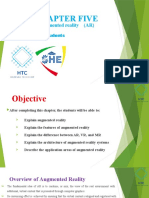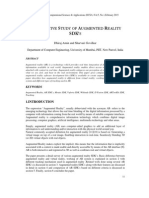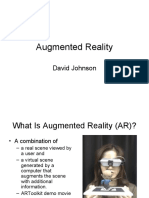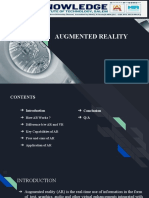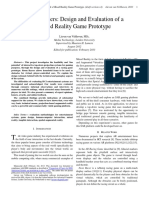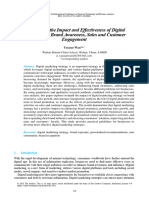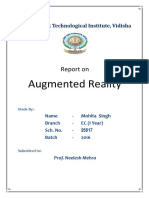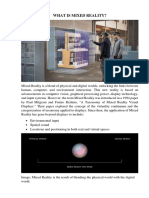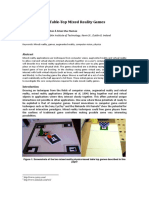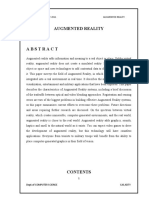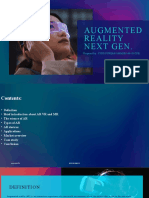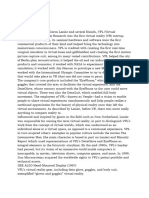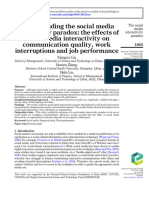0% found this document useful (0 votes)
203 views21 pagesPrepared By:syed Furqan Javade (160-18 CSE)
The document provides an overview of augmented reality (AR), virtual reality (VR), and mixed reality (MR). It defines each term and provides brief examples. The document then discusses the science behind AR and lists common AR devices like smartphones, tablets, head-mounted displays, and smart glasses. It provides examples of AR applications in various industries and concludes with a case study on Facebook's rebranding to Meta to focus on virtual reality and the metaverse.
Uploaded by
Furqan SyedCopyright
© © All Rights Reserved
We take content rights seriously. If you suspect this is your content, claim it here.
Available Formats
Download as PDF, TXT or read online on Scribd
0% found this document useful (0 votes)
203 views21 pagesPrepared By:syed Furqan Javade (160-18 CSE)
The document provides an overview of augmented reality (AR), virtual reality (VR), and mixed reality (MR). It defines each term and provides brief examples. The document then discusses the science behind AR and lists common AR devices like smartphones, tablets, head-mounted displays, and smart glasses. It provides examples of AR applications in various industries and concludes with a case study on Facebook's rebranding to Meta to focus on virtual reality and the metaverse.
Uploaded by
Furqan SyedCopyright
© © All Rights Reserved
We take content rights seriously. If you suspect this is your content, claim it here.
Available Formats
Download as PDF, TXT or read online on Scribd
/ 21


